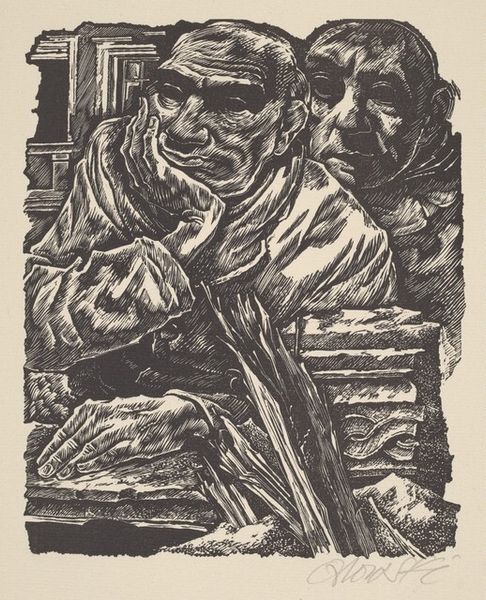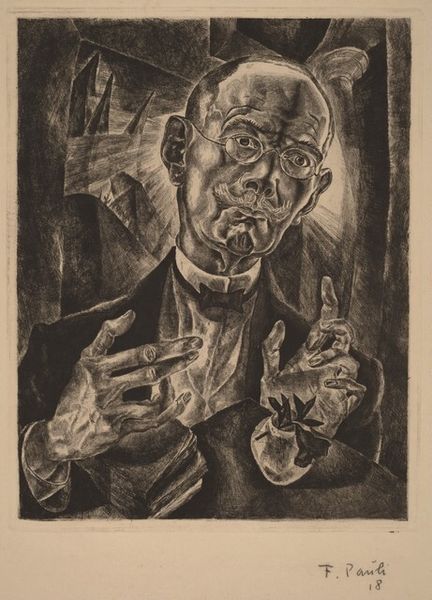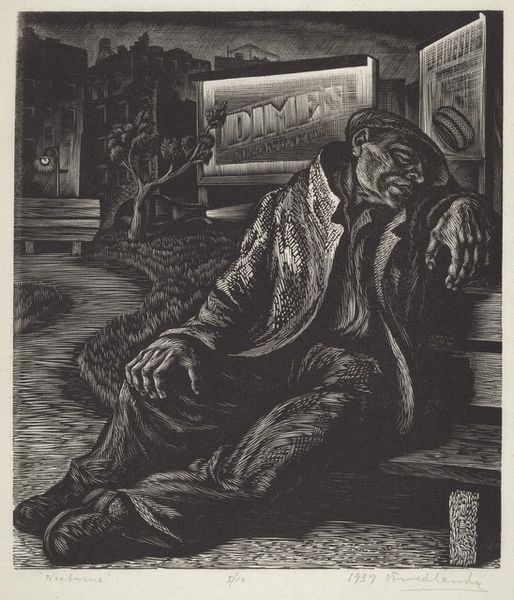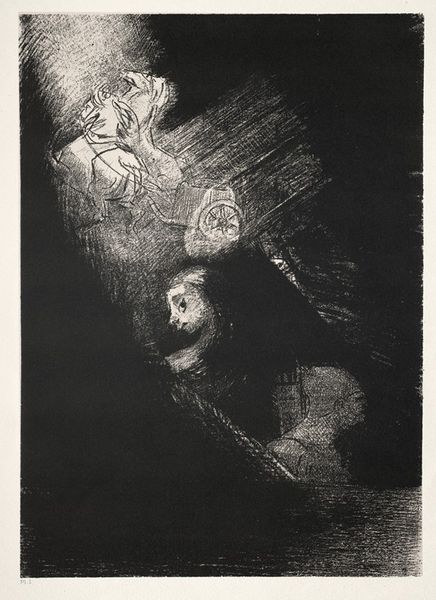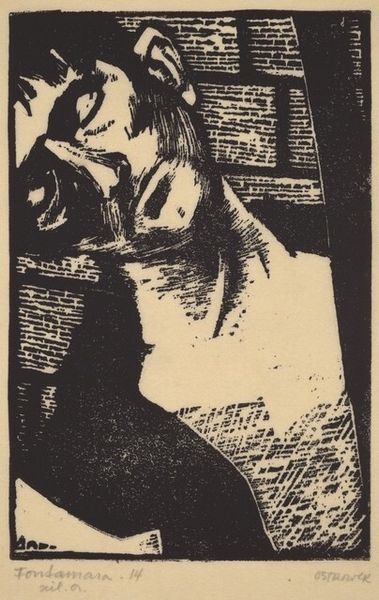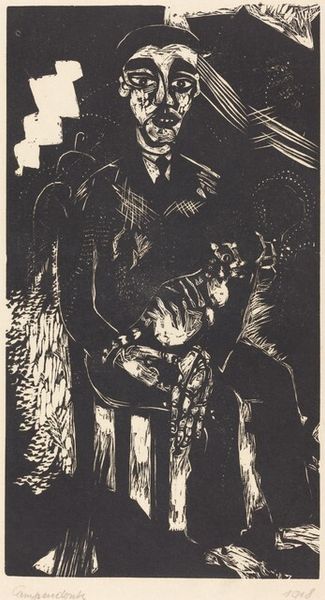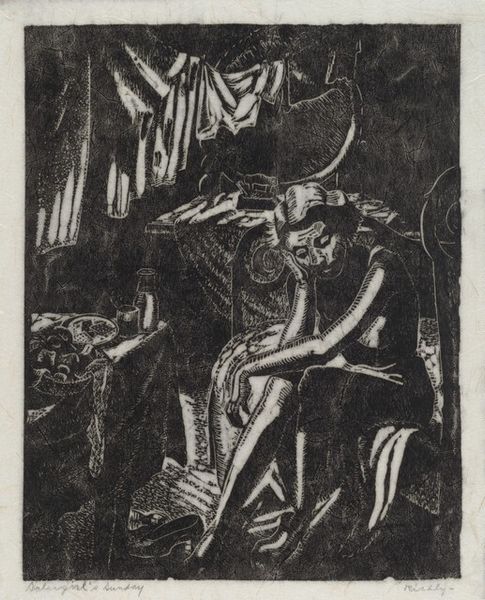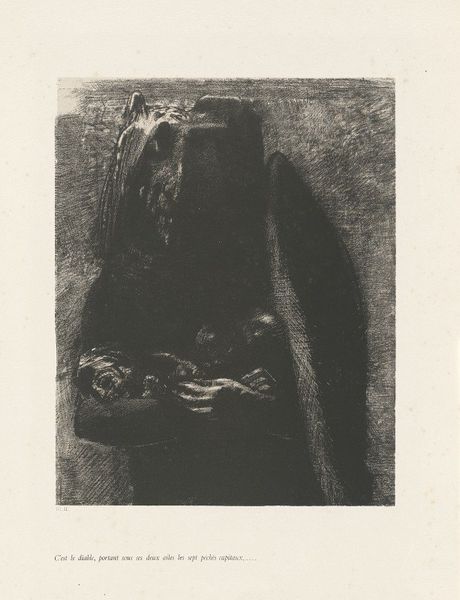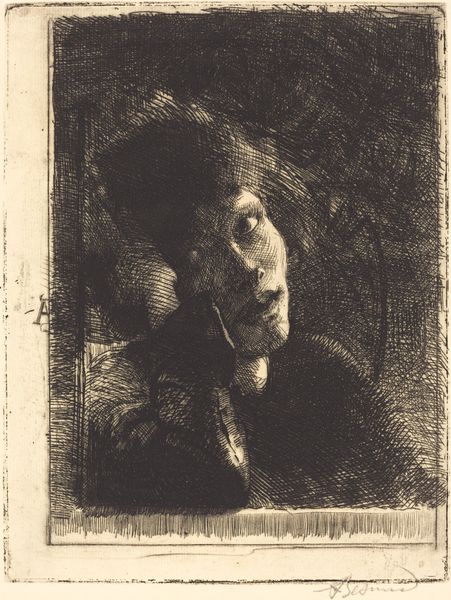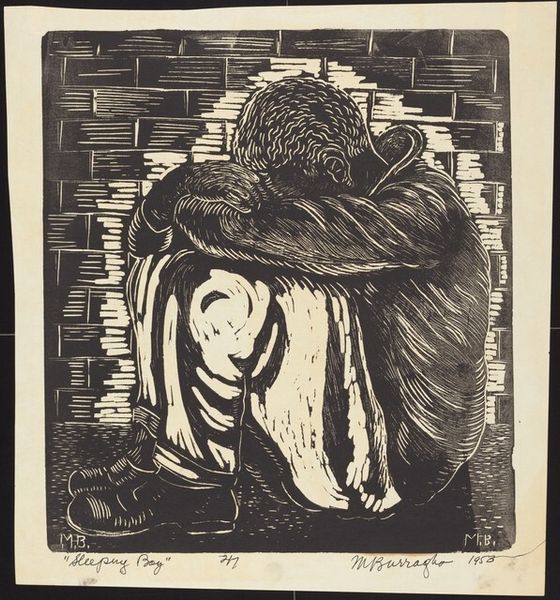
graphic-art, print
#
portrait
#
graphic-art
# print
#
caricature
#
caricature
#
social-realism
#
portrait reference
#
realism
Dimensions: image: 304 x 252 mm sheet: 393 x 328 mm
Copyright: National Gallery of Art: CC0 1.0
Curator: Look at this affecting piece—a 1948 print by Ted Kraynik entitled "Who'll Buy My Hands?" It presents a deeply human subject amidst what looks like an industrial backdrop. Editor: Stark. Immediately, it feels stark. The extreme contrasts between light and shadow create such a dramatic tension, like a silent scream. Curator: Indeed. Kraynik, working within a social realist tradition, powerfully evokes themes of labor and perhaps exploitation here. His choice of graphic art underscores a sense of immediacy. The very rough printmaking process conveys this working class aesthetic and the hard labor he represents. Editor: The eyes look upward, as if in prayer, but it is the gnarled and calloused hands that really tell the story here. This pose with the hands clasped together almost evoke the image of shackled hands or begging. What could this symbolise, beyond the evident hardship of the man in question? Curator: I read them as symbols of a worker's identity—his hands are his tools, his means of survival. To offer them, almost pleadingly, highlights a vulnerability within a system that reduces individuals to mere instruments. He has a backdrop of industry with the smoking towers perhaps even suggesting how this individual's fate has been intertwined with industry. Editor: There's an interesting ambiguity. The industrial backdrop could signify both opportunity and oppression—the engine of progress fueled by individual sacrifice. This is such a sad view though, to only focus on a person’s labor! It really embodies the working conditions after the second world war for many ordinary people and makes one ponder at whose expense the world keeps spinning round! Curator: I think that's the genius of Kraynik's work. It distills this paradox through the symbolic weight of the figure and the graphic medium. By extension, the artwork becomes a reminder of historical inequalities. Editor: Yes, a sombre and powerful piece; it demands contemplation about the cost of labor on the individual soul. This remains pertinent for social justice and a reminder that there are humans behind products.
Comments
No comments
Be the first to comment and join the conversation on the ultimate creative platform.
